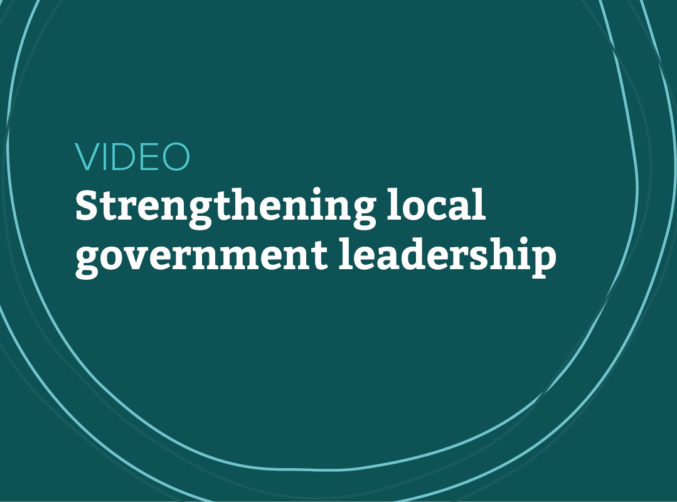From late 2020 to early 2021, the Sanitation Learning Hub collaborated with local government actors and development partners from three sub-national areas to explore ways of increasing local government leadership and prioritisation of sanitation and hygiene (S&H) to drive progress towards area-wide S&H.
For some time, local government leadership has been recognised as key to ensuring sustainability and scale and it is an important component of the emerging use of systems strengthening approaches in the S&H sector.
It is hoped that this work will provide practical experiences to contribute to this thinking. Case studies were developed to capture local government and development partners’ experiences supporting sub-national governments increase their leadership and prioritisation of S&H in Siaya County (Kenya, with UNICEF), Nyamagabe District (Rwanda, with WaterAid) and Moyo District (Uganda, with WSSCC), all of which have seen progress in recent years.
The cases were then explored through three online workshops over a period of three months, with staff from the local governments, central government ministries and development partners involved to review experiences and identify levers and blockages to change. A Learning Brief (available in English and French) documents the lessons from these workshops (also summarised below).
Lessons from this work have now informed a workstream focusing on the same themes, but with a geographical focus on West Africa. In 2022, we are now building on this format trialled in East and West Africa with a new geographical focus in South Asia, East Asia and the Pacific.
Emerging lessons
- Conduct stakeholder analysis to plan institutional triggering and determine who to focus on, at what level, when, and how to target them to achieve maximum impact/influence.
- Follow up with leaders to hold them to account on actions they have committed to.
- Find and support S&H champions who will remain in place across political transitions, who can lobby new S&H leaders and hold them to account throughout their term (for example, the media).
- Document plans and commitments with all stakeholders to support continuity across transitions.
- Encourage decision makers to demonstrate public leadership on S&H, for example through participation in global celebration days.
- Use healthy competition to motivate local governments to prioritise S&H.
- Use well-presented data to support arguments for S&H at local (and other) levels (for example, on ODF and S&H coverage, adding disease trends if available – presented in accessible formats).
- Map the people and processes involved in resource allocation and design influencing activities to target and fit within these.
- Add SDG and post-ODF indicators to monitoring systems.
- Advocate for investment in timely, easy-to-use monitoring systems at local and national levels.
- Consider the use of learning exchanges to support triggering, advocacy, motivation, and implementation.
- Hold regular review meetings with development partners to resolve issues, share lessons, document best practices, and support coordination.
- Conduct formative research to understand who may be vulnerable and why in a sub-national area and develop context-specific approaches accordingly (including beyond being ODF).







